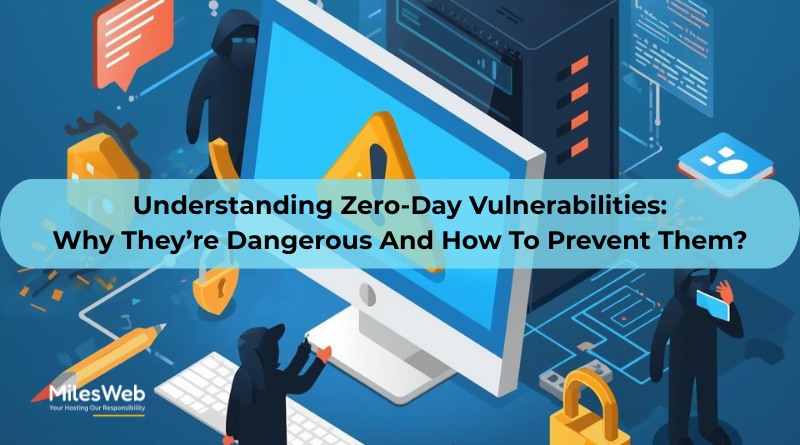Setting up a website on cheap Linux shared hosting seems simple at first—quick to launch, low cost, and ready to go—but hidden risks can be waiting behind the scenes. Zero-day vulnerabilities are the unseen risks—the bugs that nobody, not even the programmers, knew about until the hackers discovered them.
If lightning-fast performance is your top priority, NVMe shared hosting feels like an upgrade to warp speed —pages load instantly, videos play smoothly, and everything seems perfect. But fast hosting doesn’t mean your website is immune to threats. Hackers don’t focus on your performance metrics; they focus on loopholes that don’t stand out. Zero-day vulnerabilities target precisely what you didn’t know was vulnerable.
Cracks You Don’t See: How Zero-Days Slip In
Imagine leaving your front door slightly open. You didn’t think anyone would notice, but someone does. That’s basically what a zero-day vulnerability is. It’s a flaw in software, a plugin, or even your server configuration that hackers find before anyone else. And the worst part? There’s no patch available to fix it— at least not yet.
These flaws can live in your CMS, your plugins, or deep in the server’s operating system. When attackers take advantage of these flaws, they can steal data, modify your website, or gain control of your server without alerting you. Unlike known vulnerabilities, zero-days aren’t listed in security reports—they’re hidden until someone exploits them.
The Human Cost: Why Zero-Day Attacks Hurt
The truth is, when a hacker exploits a zero-day, it’s more than a technical issue—it can quickly turn into a serious problem for your business. A single data breach can erode customer trust almost instantly. Downtime from an attack can cost sales, leads, and reputation.
For shared hosting users, one compromised website can sometimes put others on the same server at risk. It’s the unpredictability that makes them dangerous. You never know where or when it will strike, which is why ignoring these threats is risky.
Stories That Make You Think
Zero-day attacks aren’t just theoretical. A few years back, the Stuxnet worm took advantage of unknown Windows vulnerabilities to devastate industrial systems. Completely unexpected, completely destructive. On a smaller scale, even bloggers and small businesses have seen zero-days infiltrate plugins or themes before patches were available.
Imagine this: you’re using a popular plugin to display your latest blog posts. One day, a hacker finds a flaw you didn’t even know existed. Suddenly, your website is redirecting visitors, stealing data, or sending spam. All while you’re sipping coffee, thinking everything is fine. That’s the silent threat of zero-day vulnerabilities.
For shared hosting customers, selecting a provider such as MilesWeb can greatly help. They proactively monitor activity, keep software up to date, and provide help when things don’t feel right—all of which assist you in catching problems before they get out of hand.
Living With the Threat: Prevention Without Panic
Let’s face it: you can’t prevent zero-days completely. But you can lower the risk significantly. The trick is stacking up defenses instead of depending on a single fix.
Begin with updates. Regularly patch your CMS, plugins, and server software. Even small updates can shut doors before someone finds them.
Next, think about hosting. A provider that takes security seriously is worth every extra rupee. Hosts like MilesWeb don’t just give you storage—they give you monitoring, alerts, and expert guidance.
Don’t overlook access. Restrict admin privileges, implement strong passwords, and use two-factor authentication. Leaving access unmonitored is basically an open invitation for trouble.
Pay attention to unusual activity. Monitor if traffic surges unexpectedly, logins show up from odd places, or files appear where they shouldn’t. Deal with these signs right away rather than waiting until a serious breach happens.
Backups are your safety net for protecting data. A secure, regular backup means that even in the worst-case scenario, you can roll back your website with a single click.
Finally, keep an eye on security tweaks and plugin updates. Zero-day vulnerabilities aren’t static—they evolve. Keeping yourself informed can be the difference between scrambling after an attack and stopping it before it even begins.
Thinking Differently About Security
When it comes to zero-day vulnerabilities, they’re not merely technical issues—they’re human ones as well. The companies that survive don’t merely patch—they look ahead. They watch, test, and evolve continuously.
It’s a matter of mindset. Check your logs like an expert, not an observer. Back up your work like it’s irreplaceable (because it is). Choose partners, including your hosting provider, that help you stay one step ahead of potential threats.
Concluding Insights
Zero-day vulnerabilities are invisible cracks that can cause real damage if ignored. They don’t care whether you’re using cheap Linux shared hosting or high-speed NVMe solutions—they look for opportunities, not convenience.
Choosing a reliable host like MilesWeb really helps. With ongoing monitoring, up-to-date maintenance, and hands-on support, you’re not just fixing problems—you’re preventing them. That’s how you keep your website and your business safe when unexpected issues come up.



